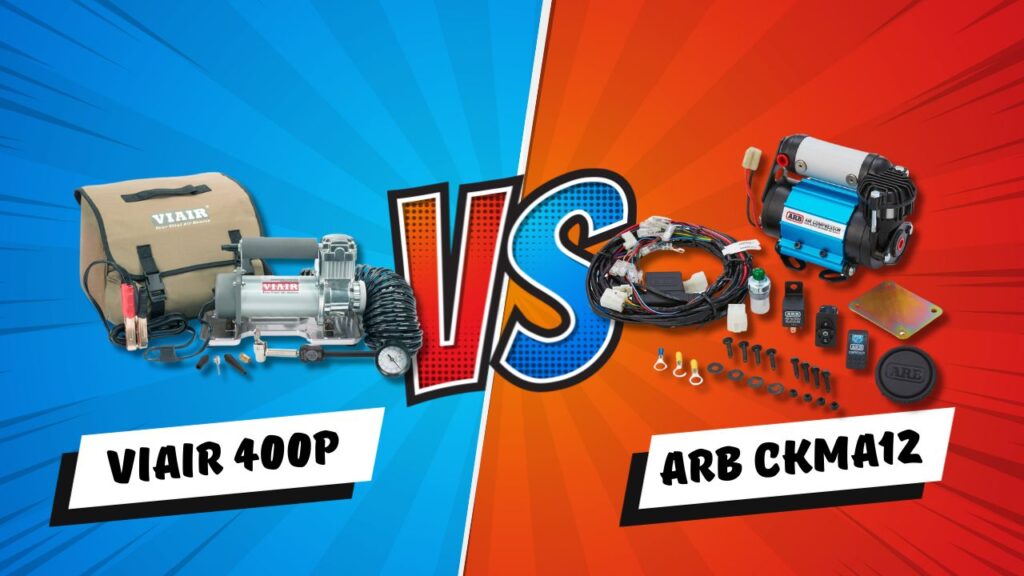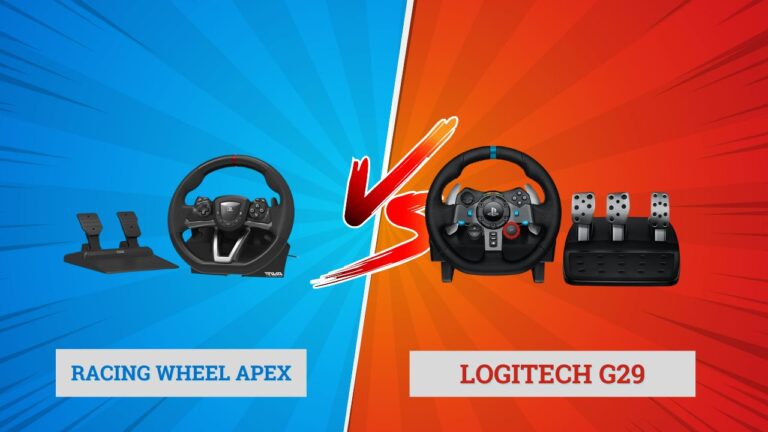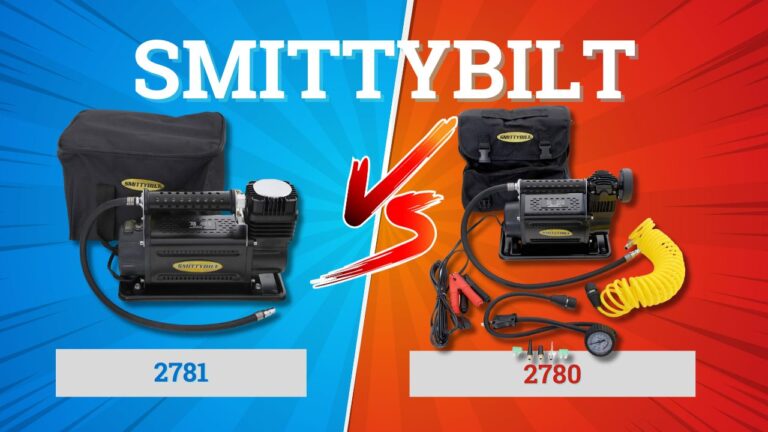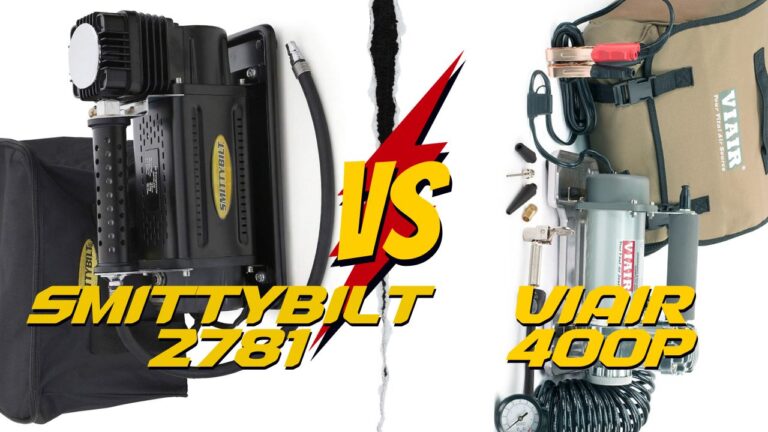Navigating the realm of air compressors, especially in the off-roading and automotive sectors, often leads enthusiasts and professionals alike to a crossroads: choosing between top-tier offerings like the Viair 400P and the ARB CKMA12. While both compressors are champions in their own right, each brings its distinct flavor to the table. This comparison aims to provide a deep dive into their shared strengths, unique characteristics, and a detailed pros and cons list for each, ensuring you make an informed choice tailored to your needs.
Shared Strengths: Common Ground
Both the Viair 400P and the ARB CKMA12 command respect in the air compressor landscape, thanks to their stellar performances and reliability. But before delving into what sets them apart, it’s essential to understand the foundations of their shared excellence. This foundation is carved out of mutual attributes that encapsulate the ethos of quality both brands consistently strive for.
Premium Build Quality
At the core of any reliable machinery is its construction. Both the Viair 400P and the ARB CKMA12 do not skimp on this front. The Viair’s robust stainless steel components speak of resilience, while ARB’s use of high-grade materials with features like the hard-anodized cylinder bore ensures a long-lasting performance.
Optimal Thermal Overload Protection
Given the nature of compressors, generating heat is inevitable. Recognizing the potential hazards and wear this can cause, both Viair and ARB have seamlessly integrated advanced thermal overload protection mechanisms. This not only ensures user safety but also enhances the lifespan of the compressors, providing peace of mind during extended operations.
Universal 12V DC Power Integration
Tailored for adventure seekers and professionals alike, both these compressors harness the ubiquity of the 12V DC power source. This design choice amplifies their versatility, allowing them to be easily powered by standard vehicle batteries, thus making them indispensable tools in remote terrains and emergency scenarios.
Precision-Driven Inflation
When inflating tires or other equipment, precision can’t be compromised. Viair and ARB have both placed a premium on this aspect. The meticulous gauges and advanced inflation mechanisms in both the 400P and CKMA12 ensure that users can achieve desired pressure levels accurately, reducing the risks of over or under-inflation.
Sealed Components for Environmental Protection
Off-roading or on-site tasks can expose compressors to varied environmental conditions, from dust and dirt to moisture. Both these models come equipped with sealed components that protect the machinery from external elements, ensuring consistent performance and extended life, even in challenging environments.
User-Friendly Interfaces
Usability plays a crucial role, especially when users are in demanding situations. Viair and ARB prioritize user experience by ensuring that their compressors have intuitive controls and clear indicators. The inclusion of ergonomic handles, easy-to-read gauges, and user-friendly switchgear make both these units a pleasure to operate.
High Efficiency and Quick Recovery Times
Efficiency is the hallmark of any top-tier compressor. Both the 400P and CKMA12 pride themselves on their quick recovery times and consistent air output. This ensures that users don’t have to wait long durations between tasks, making them particularly useful in scenarios demanding rapid inflation or tool operations.
Distinct Characteristics: Drawing the Line
While the Viair 400P and the ARB CKMA12 share a robust foundation of quality, their tailored attributes shape their individual identities. Understanding these distinct features becomes imperative for users who seek a perfect alignment with their specific requirements.
Operational Modality and Design Philosophy
At the heart of their differences lies the core design intent. The Viair 400P is the embodiment of portability, sculpted for users who prefer a unit that can be set up and stowed away quickly. On the other hand, the ARB CKMA12 gravitates towards permanence, with a design optimized for longer-term vehicle installations.
Performance Parameters and Endurance
The nuances of performance between these two are intriguing. The 400P has an admirable duty cycle but may necessitate occasional breaks during extended tasks. The ARB CKMA12, optimized for longer hauls, boasts a more resilient architecture, allowing for prolonged, uninterrupted use especially when high demands are placed upon it.
Accessory Suite and Compatibility
Viair’s 400P, given its portable nature, often ships with a curated set of accessories focused on immediate utility and swift deployment. The ARB CKMA12, rooted in its installation-focused philosophy, tends to be bundled with mounting brackets, hardware, and specialized components that make it seamlessly integrate with vehicles.
Air Delivery Dynamics
The CKMA12, being more oriented towards high-demand scenarios, generally sports a slightly superior CFM (Cubic Feet per Minute) output, making it a preferred choice for tasks that demand faster inflation or for powering air tools. The 400P, while efficient, is fine-tuned more for standard inflation tasks.
Mounting Versatility
The ARB CKMA12, with its intended permanent or semi-permanent mounting design, offers more robust mounting solutions, ensuring it stays secured in rugged terrains or during off-roading escapades. The Viair 400P, with its focus on portability, provides flexible yet temporary setup options.
Integrated Technologies
Both compressors are fortified with unique technological implementations. While they both boast advanced thermal protection, the CKMA12 might come with additional features such as integrated pressure cut-off switches or specialized air filters, enhancing its suitability for longer-term setups.
Noise Signature and Vibration Management
Though both are crafted to minimize noise, their operational dynamics bring subtle variations. The ARB, with its permanent setup, may incorporate advanced noise dampening mechanisms or materials, reducing vibrations and operational noise. The 400P, being portable, might have a slightly different noise and vibration signature, optimized for short-term operations.
Maintenance and Upgradability
The ARB CKMA12, given its intended longevity, may offer more accessible maintenance points or even modular upgrade options. The 400P, in its pursuit of compactness, might prioritize an integrated design, which might be slightly more challenging to modify or upgrade.
Pros and Cons
Viair 400P:
- Pros: Highly portable, precision gauges for accurate inflation, robust construction, good duty cycle for its class.
- Cons: May require occasional rests during extended use, slightly lower CFM compared to ARB.
ARB CKMA12:
- Pros: Higher CFM output, designed for permanent vehicle installation, robust and continuous performance, comprehensive mounting kit.
- Cons: Less portable by design, may require a more involved installation process.
In Conclusion
The decision between the Viair 400P and the ARB CKMA12 hinges on your specific needs and preferences. If portability and immediate utility are paramount, the Viair 400P stands out. However, if you’re leaning towards a fixed installation, demanding higher CFM and consistent readiness, the ARB CKMA12 might be the way to go.
Both compressors are stalwarts in the industry, reflecting their respective brands’ commitment to quality, innovation, and user satisfaction. By assessing your unique requirements and aligning them with the attributes of these compressors, you’re poised to make a decision that will serve you well in your adventures and professional tasks.




